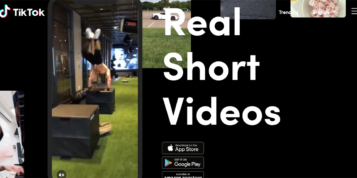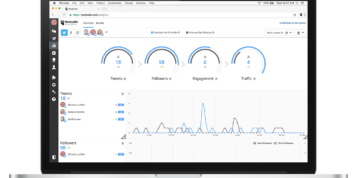Facebook’s wide ranging plan to alter what its users see in their news feeds has certainly started 2018 off with a bang for publishers and brands. Many fear that their video content will now be deprioritised and engagement levels will collapse as a result.
Facebook’s reworking of its algorithm has already had an effect. It recently reported that there was a 5% drop in daily usage as of Q.4. This drop in use also mirrors Wochit’s own analysis regarding engagement for the most popular content on the platform: video. We found average views per video during Q3 shrank by 8% from Q2 and declined another 15% in Q4.
With both usage and engagement levels dropping, this paints a bleak picture for the future of publishers’ and brands’ high-end, professionally created content on the platform. Or does it?
I would argue this newly instituted change actually presents new opportunities for anyone looking to publish video content to the network.
This is because Facebook has actually been quite open about what changes it will be implementing. In a nutshell, it will now prioritise content that elicits lengthy comments, as, according to the social media platform, it’s an indication that the content has generated ‘meaningful social interactions’. Undoubtedly, in my view, publishers and brands already have the talent and storytelling abilities to generate such deep conversations and can rise to this new challenge posed by Facebook’s altered approach to the news feed.
Focusing on video will still be a critical strategy in answering this challenge, as is by far the most engaging format on Facebook. This is unlikely to change too, as video will account for 82% of all internet traffic by 2020. However, the focus will shift to creating really high-quality videos, the kinds of videos that are viewed by a mass audience but which also spark a high degree of conversation and clicks. It will mean publishers must work harder to uncover and produce the kinds of content that really resonates, as well as crafting and inviting entry points for engagement, such as strong call to actions (CTAs) throughout their videos.
Those which do so will continue to succeed on Facebook, even as the rules of the game change, but what are the best ways to delight viewers?
Box things off
We started with 4:3 and added 16:9, but could the holy grail be 1:1? Last year, the square video format began gobbling up the wider landscape. From representing just 26% of all Facebook videos in Q1, by Q4 half of all the platform’s videos were shot in the format, according to our Index.
Of course, Facebook’s mobile tipping point occurred a long time ago, when more people began using the service on phones than on desktops. Now publishers have caught up, publishing in a format that shows well for users on mobile and other platforms, without needing to rotate their screen.
The reasons to do so are clear. Square-format videos clock up 275% more views, 482% more shares, 523% more comments and 349% more reactions, we found.
Video’s 1% challenge
The most popular videos also receive the highest engagement. That will come as little surprise. The crux then, is that only 1.2% of videos we saw last year received over a million views, putting them in the “viral” category.
However, all is not lost. Whilst these “viral” videos generated 38.7% of all views, videos we deemed “popular” – those which earned more than 100,000 views – actually commanded the majority of views, 43.3%.
There is a clear incentive to publish videos that achieve a high view count. Viral videos attracted 58.2% of all video shares, whilst those achieving fewer than 100,000 views generated only 8.1% of the shares. To gain high engagement, then, a large audience is a must.
Play the long game
Once upon a time in the future of media, companies were all about crafting short, “snackable” video clips, sized for consumers’ busy lives. But we actually found that the longer the video, the higher the engagement.
Through 2017, videos longer than 90 seconds had 52.1% more shares than other videos.
Publishers have taken note, producing increasingly longer videos to boost those numbers. In Q1 2017, only 12.6% of Facebook videos ran longer than 90 seconds, by Q4 that had reached 22.1%.
Content remains king
Lastly, all the best video strategies in the world may not beat simply producing great content.
We found that videos with titles designed to impart knowledge (like “you didn’t know”, “5 ways to” or “you need to”) may have been most popular, but the average view count for these videos fell far below the average for all videos, by up to 70%.
Likewise, the most obvious celebrity contenders for inclusion in video content don’t necessarily make your video sing. For instance, videos of Donald Trump saw smaller average viewership than those of his wife Melania.
So stick to your gut instinct – great content is great content.
Publishers and brands face ever-changing challenges when it comes to working with every social media platform, as evidenced by Facebook’s recent shift. Clearly, policies and approaches can change in a flash.
However, if content creators remain open and flexible to these challenges, they can use it as an opportunity to revamp existing content strategies and create a new path to success in this ever-changing environment.





